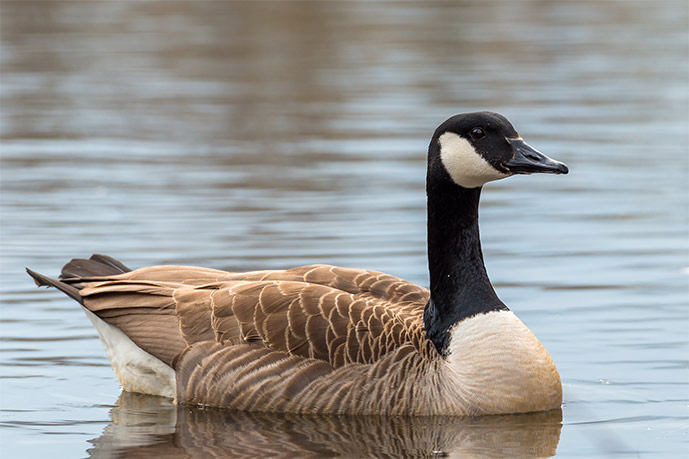This page tells about the Canada Goose. It is part of our water birds series.

Description
The familiar Canada goose is North America's most common goose. Measuring up to 43 inches in length, the Canada Goose has a black head and neck with a conspicuous white gumdrop-shaped marking that extends through the face. The breast and underparts are a dusky-white color and the back and wings are brown. The Canada Goose has a white rump, black tail and black beak. Females and males are identical. Northern individuals tend to be smaller and size and western individuals tend to be darker. The "honking calls" of Canada Geese are often heard while the birds migrate in their characteristic "V" formation.
Diet
Plants, grains, weeds, grasses, and berries.
Range and Habitat
The Canada Goose breeds throughout Canada and the northern two-thirds of the United States. They can be found throughout the lower 48 states during the winter (except in south Florida). Canada geese are found in lakes, ponds, rivers, fields, airports, golf courses, parks.
Status
The Canada Goose is so common that it has become a nuisance. Huge non-migratory populations exist in major cities, suburbs, and on golf courses and ponds.
Related activities
Advertisement

